Urban agroforestry on balconies
23 and 24 December 2019
After arriving in Wufeng district (霧峰區) in Taichung, in a city block of adjoining houses, I am welcomed by a vertical jungle ! It is the abode of Florent Caquineau, a French who has been living in Taiwan for almost thirty years. From a plant bed on the first floor, through the balconies of the three floors and up to the roof of the building, whether on the facades facing north or south, each cubic meter contains plants that are mostly edible, and even fruit trees! Come with me to discover how an urban building has been transformed into a multi-tiered food garden!

How to prepare growing areas ?
Gardening on balconies requires to use some containers which will be filled with a growing medium.
In our case, the building already had a few concrete planters integrated into the balconies, which were therefore used to grow eggplants here (south-facing facade), taros there (north-facing facade), and ornamental shrubs.
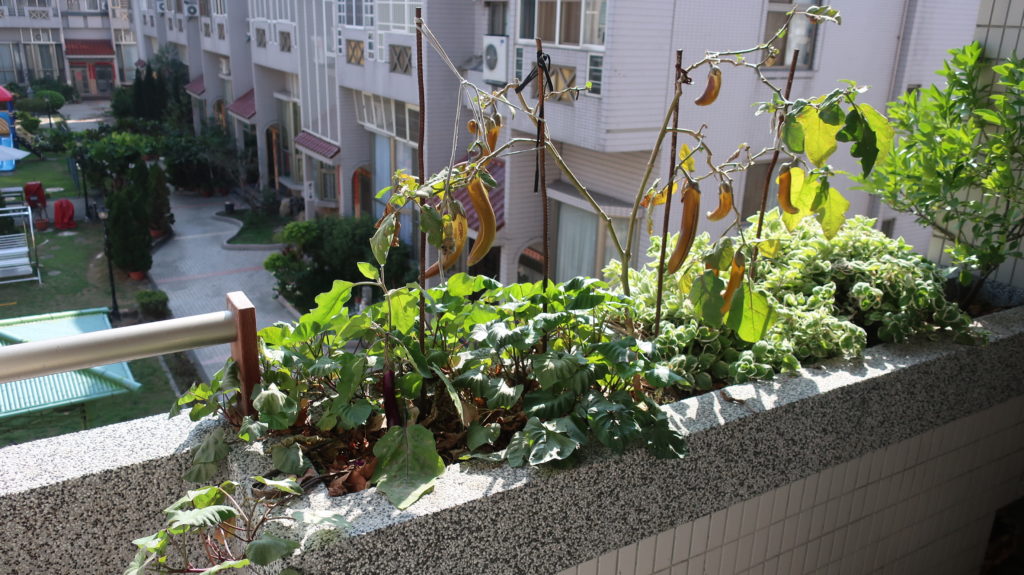

Florent has also adopted the Taiwanese habit of recovering polystyrene containers to grow small vegetables with a rapid growing cycle, such as lettuce. This method is to be used sparingly so as not to end up with plastic everywhere! Florent only has 2 or 3 of them, with reduced exposure to the sun and the rain.
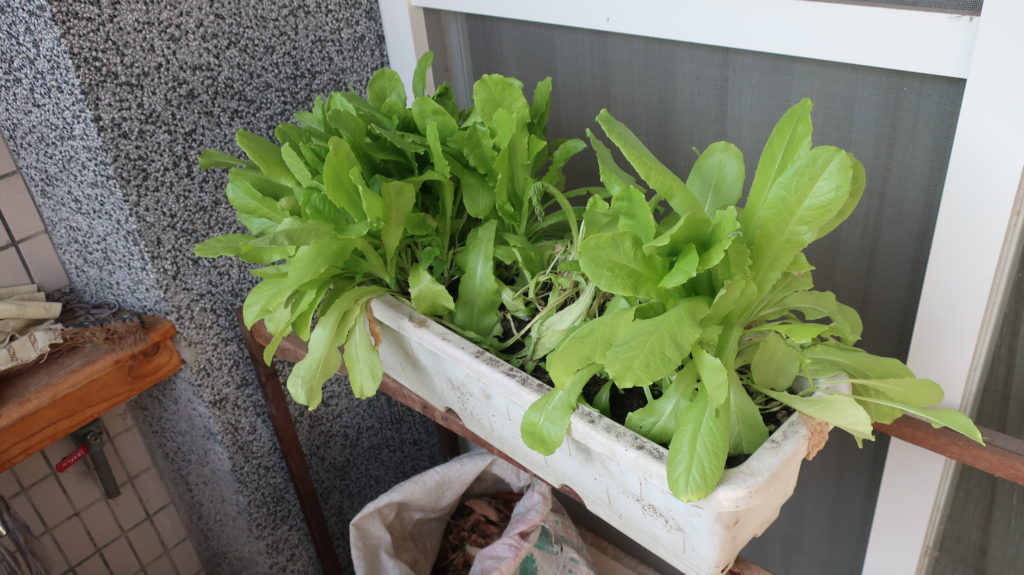
Florent’s real innovation is to not really use containers, but to cultivate in a substrate placed directly on the ground, held in place by the edges of the balcony and various structures made of masonry bricks, branches or bamboo segments tied together.
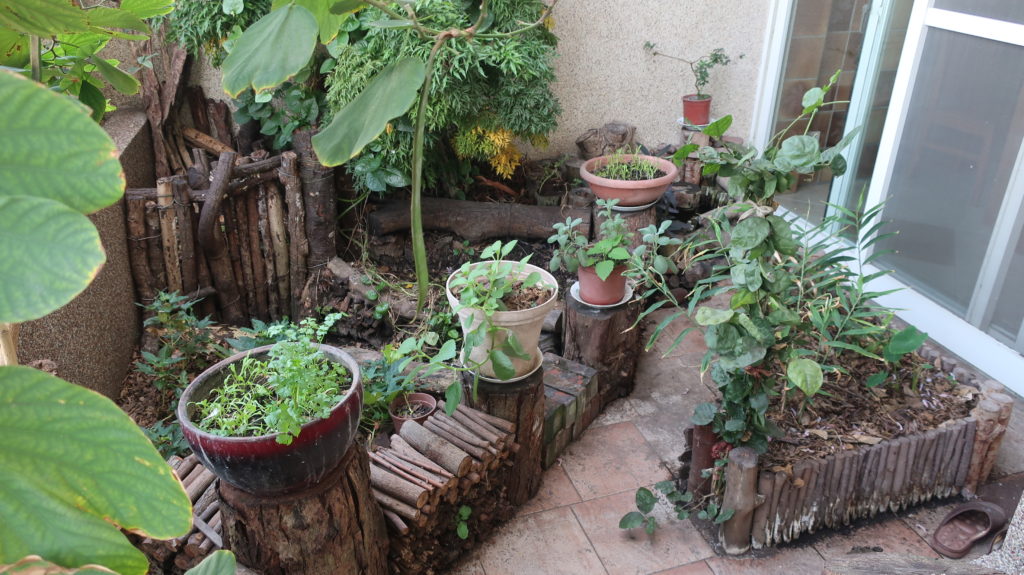

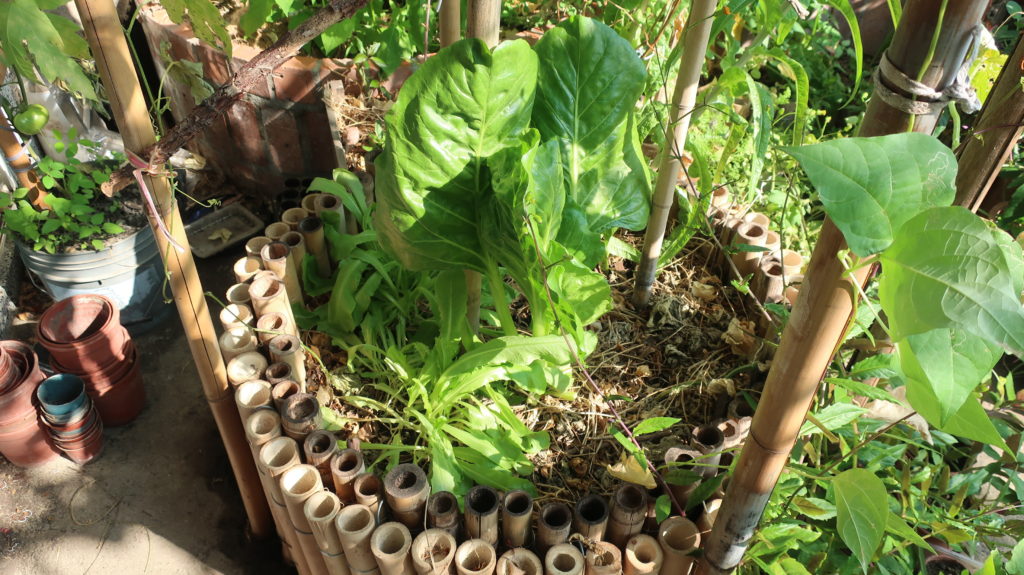
The cultivation areas first receive a first layer of small pieces of bricks, clay beads, pierced coconut shells… depending on what is available, in order to create a draining layer so that the water does not overload the balconies. Then above, in order to recreate a soil suitable to plant growth, Florent mixes some clay recovered from the paddy fields irrigation channels, and a lot of potting soil and/or compost, either purchased or homemade from leftover fruits and vegetables and green waste collected here and there in the block. The part of green waste that is richer in carbon is also used to abundantly mulch the surface of the containers. This mulch breaks down quickly in Taiwan’s humid climate and helps enrich the substrate with organic matter. This is also the main method by which Florent maintains the fertility of his crops.

Layering crops
It is possible to go further than the creation of “simple containers”. Indeed, on such small surfaces, what plants are lacking the most is space. To avoid competition for light and nutrients, Florent has therefore found different techniques to layer his crops.
One of these techniques is the construction of multi-level cultivation areas, which enables crops with less exposure to be raised higher so they can access more light.
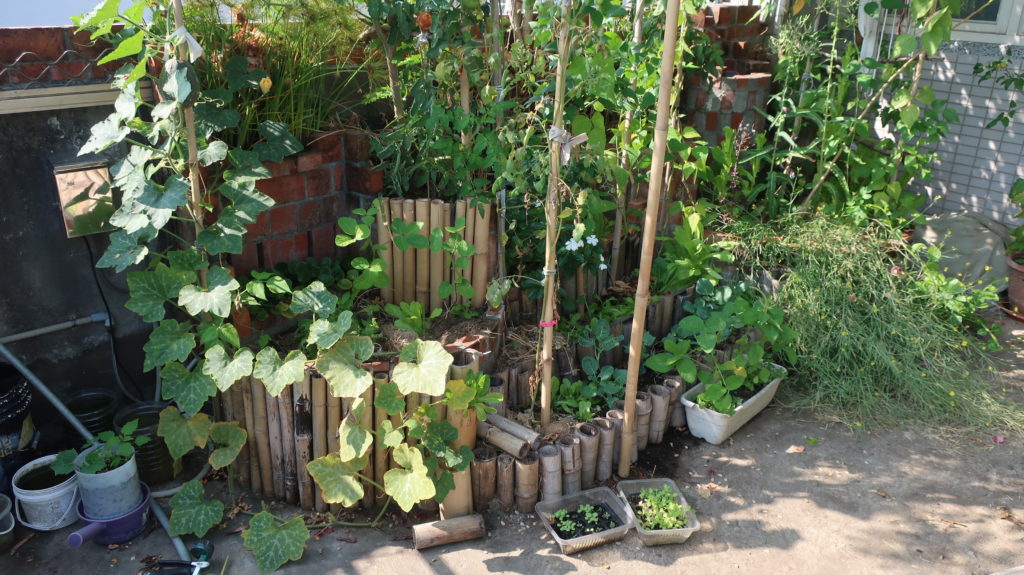
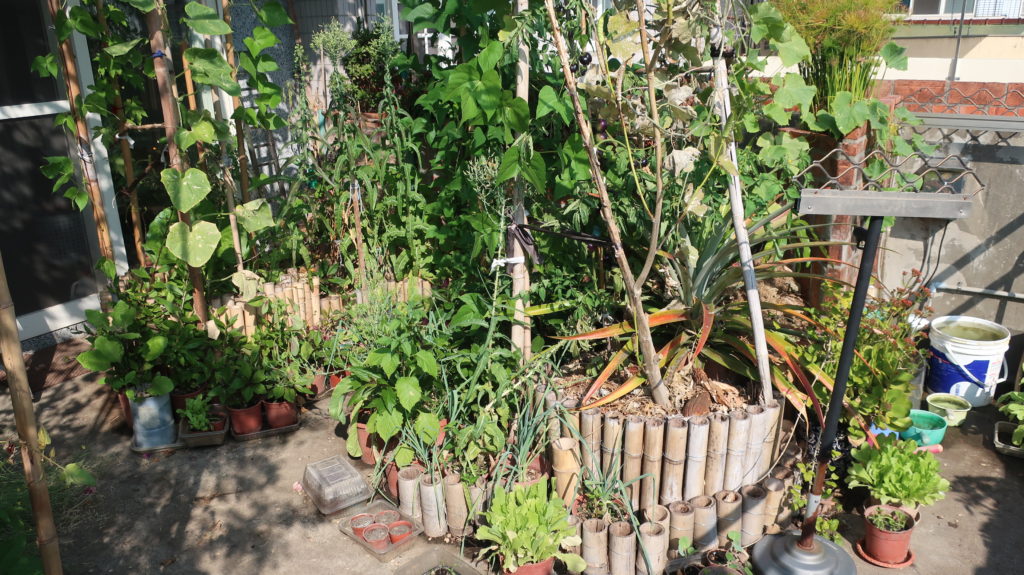
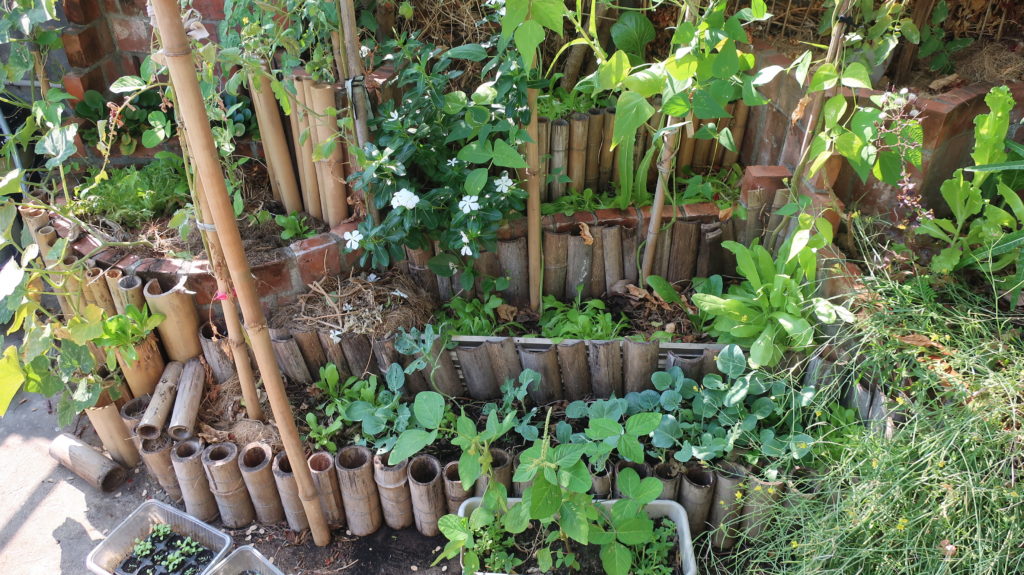
Another technique which is commonly used in agriculture is the use of stakes and trellises to make twining plants climb, which also saves some area by occupying the 3rd dimension.
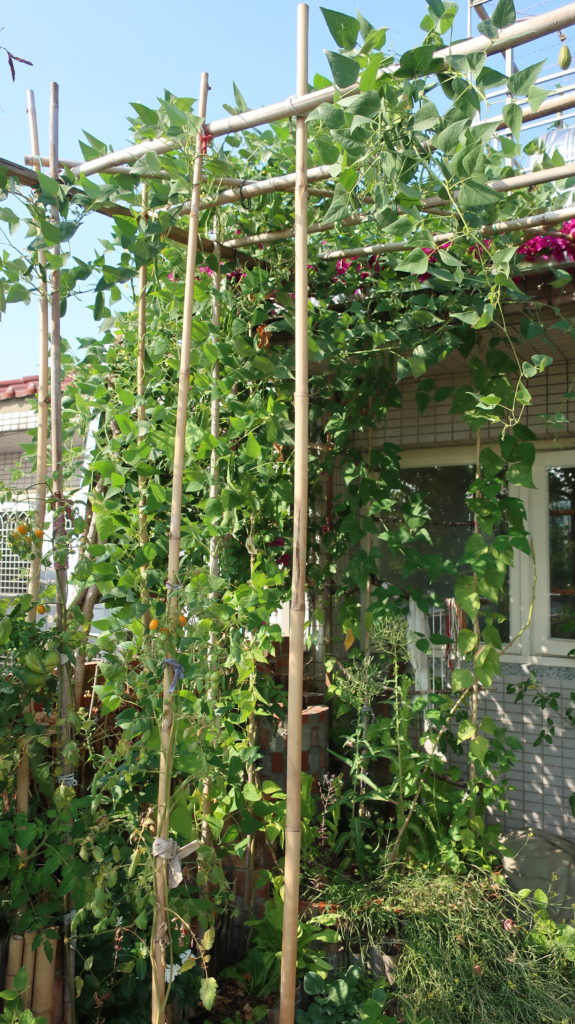



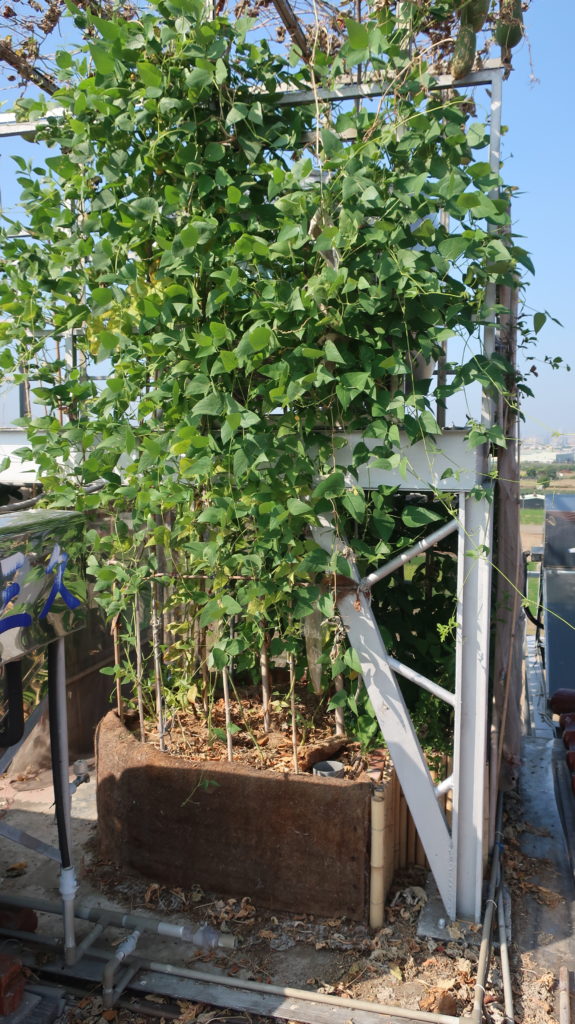

Introducing trees
To take advantage of the reduced space even more, ligneous species (small trees) have been planted, either to provide fruit or simply to decorate.




On the small “field” on the first floor, the few square meters have been used to create a miniature edible forest.
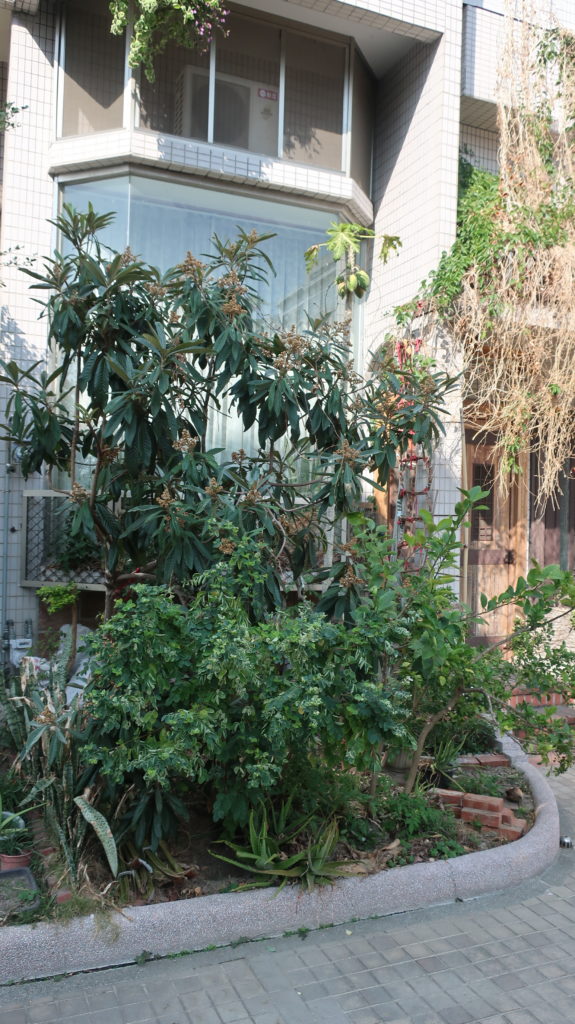
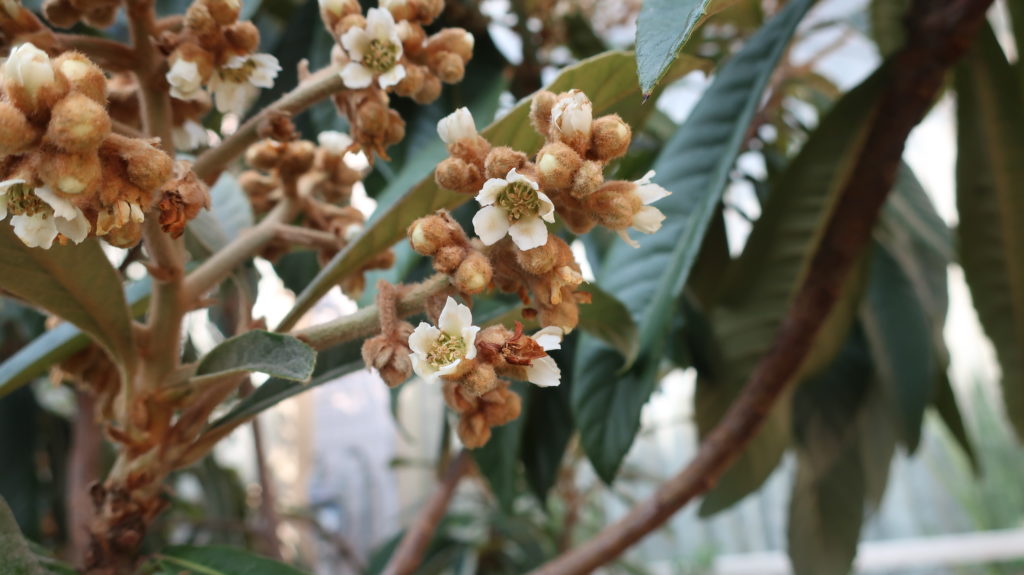
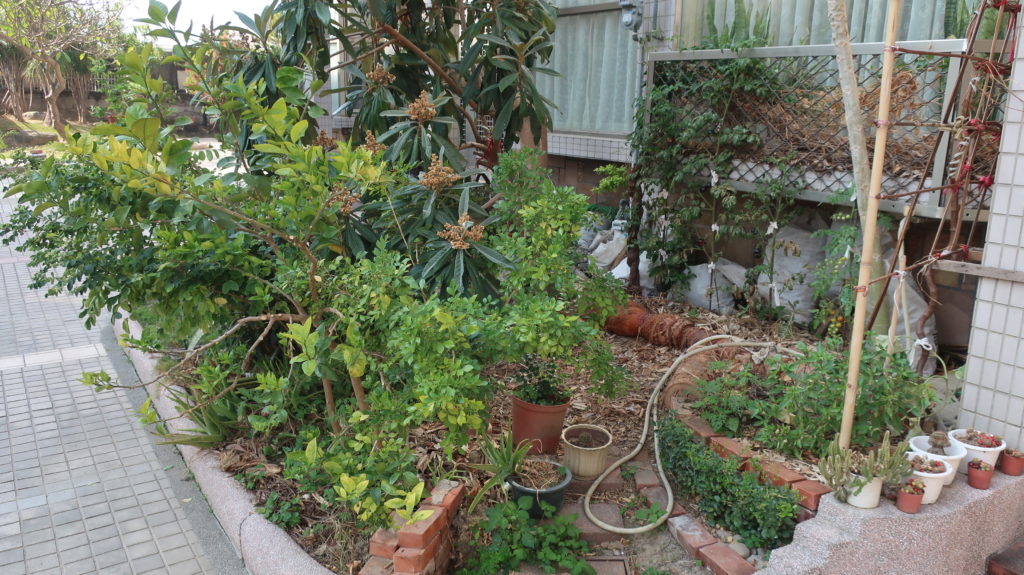
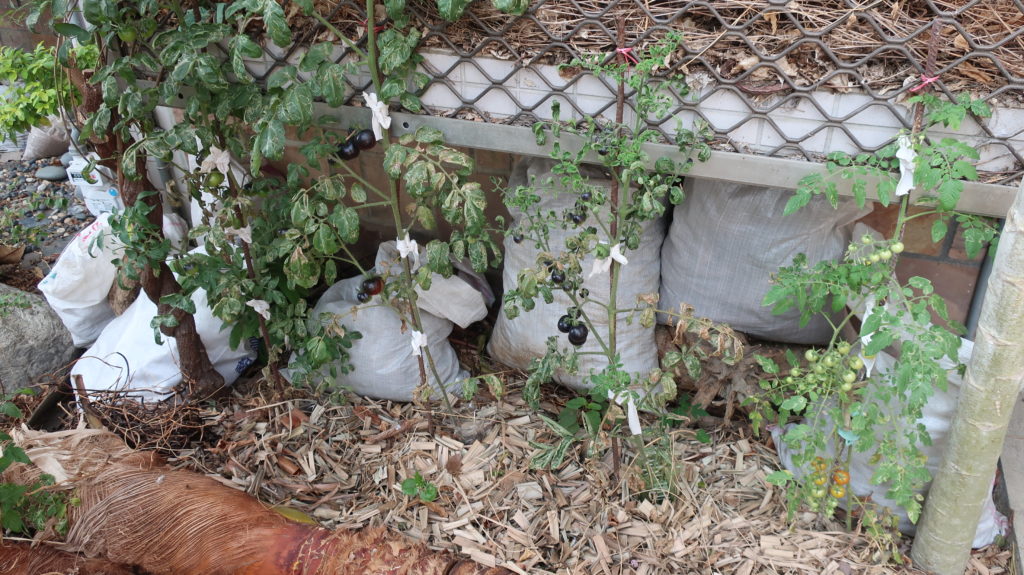
This example of urban agriculture shows that it is possible to produce a non-negligible part of our food, particularly fresh vegetables and fruits, using the 3 dimensions of the residential buildings that have grown like mushrooms all over the world. Of course it would have been better that this nourishing soil had not been covered with concrete, but producing food on surfaces which had not been planned for it is a step towards more resilience.

